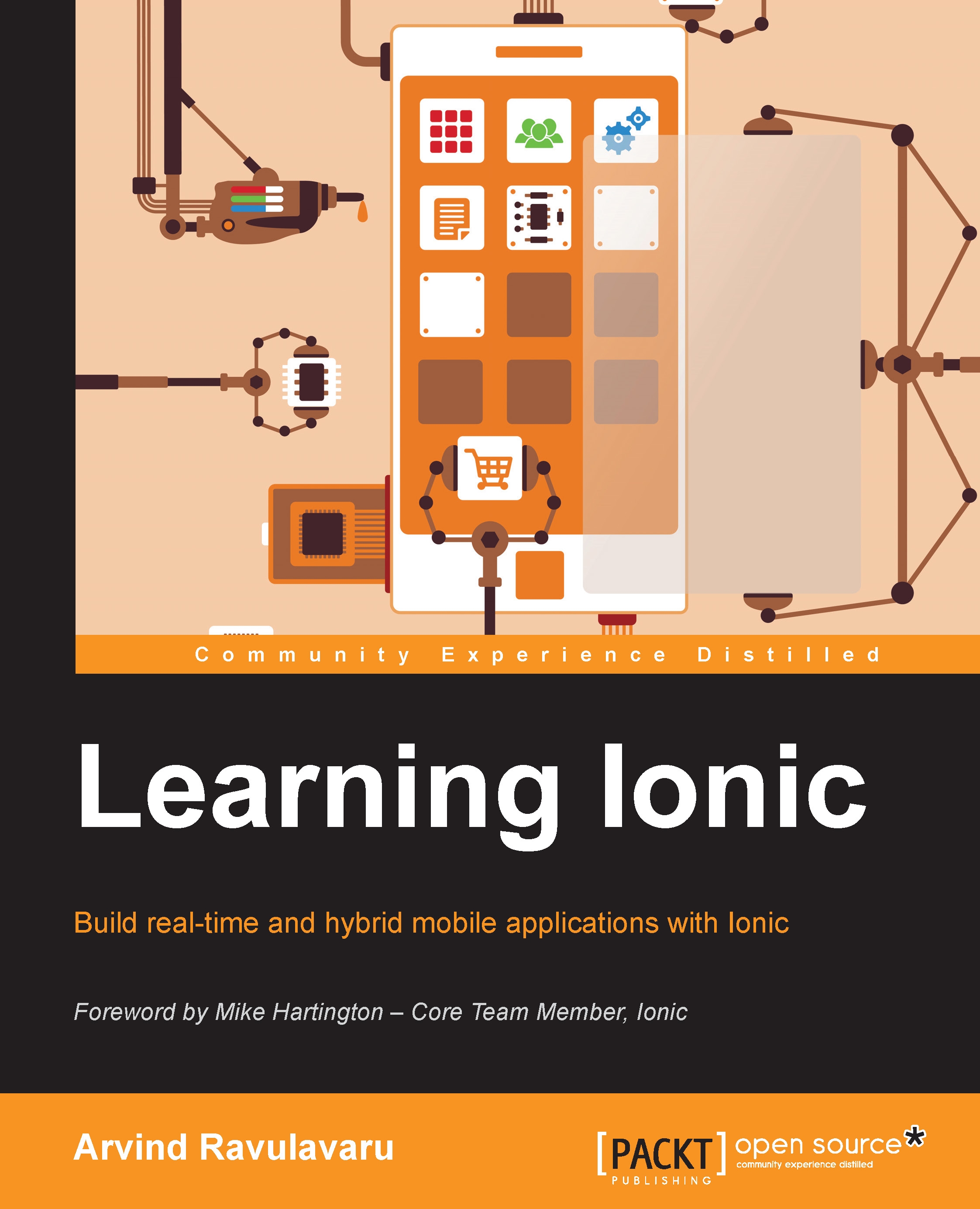-
Book Overview & Buying

-
Table Of Contents

Learning Ionic
By :

Learning Ionic
By:
Overview of this book
 Free Chapter
Free Chapter
 Sign In
Start Free Trial
Sign In
Start Free Trial

 Free Chapter
Free Chapter
Ionic is one of the most widely used mobile hybrid frameworks. It has more than 17,000 stars and more than 2,700 forks on GitHub at the time of writing this chapter. Ionic is built on top of AngularJS, a super heroic framework for building MVW apps. In this introductory chapter, we will take a look at AngularJS and understand how it powers Ionic. We will take a look at a couple of key AngularJS components, named directives, and services that are widely used when working with Ionic.
This book assumes that you have basic to intermediate knowledge of AngularJS. If not, you can follow the book AngularJS Essentials, Rodrigo Branas, or the video Learning AngularJS, Jack Herrington, both by Packt Publishing, to get yourself acquainted with AngularJS.
In this chapter, I will explain only AngularJS directives and services. For other core AngularJS concepts, refer to the book/video mentioned earlier.
In this chapter, we will cover the following topics:

Change the font size
Change margin width
Change background colour